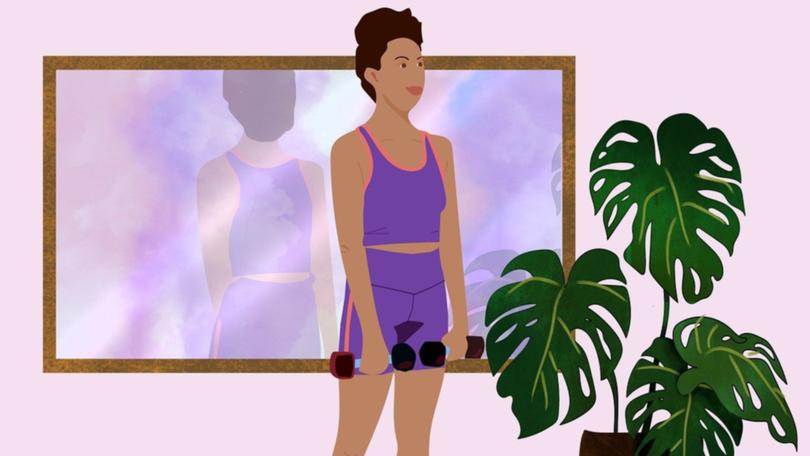The New York Times: What popular fitness fads get wrong

A new trending workout seems to emerge every month. Each guarantees a happier, healthier, stronger and leaner you.
There’s a viral challenge, known as “75 Hard,” which promises to improve your mental toughness if you work out for 45 minutes twice daily — while also sticking to a diet and drinking a gallon of water a day, among other things. Another, known as 12-3-20 (not to be confused with 12-3-30 or 25-7-2), claims to transform your body. And there’s always some new kettlebell routine with thousands of TikTok views saying it can make you a faster runner almost immediately.
Sign up to The Nightly's newsletters.
Get the first look at the digital newspaper, curated daily stories and breaking headlines delivered to your inbox.
By continuing you agree to our Terms and Privacy Policy.There’s no doubt that a vigorous fitness regimen could help improve your stamina, in the same way that eating a healthier diet and committing to more sleep may help you feel more energized and rested. The actual workouts of these plans are often perfectly fine, but the problem is how they make you think about exercise.
Oftentimes, the advice of these fitness strategies is “misleading at best and dangerous at worst,” said Victoria Sekely, a physical therapist and the founder of Train Smart Run Strong, leaving you feeling worse than you did before and leading to injury or burnout.
Here’s how you can identify which exercise fads may help you reach your goals and which may set you up for injury or disappointment.
Be realistic about your starting point.
Many fads are actually designed for people who already have a workout routine and may not be suitable for beginners. Influencers don’t know where you are starting from.
“The person on social media giving you advice doesn’t necessary have any background in it other than their own anecdotal experience,” said Heather Milton, a clinical exercise physiologist and strength and conditioning specialist at Sports Performance Center at New York University Langone Health.
If you have never worked with heavy weights, for example, doing a daily kettlebell swing ladder could cause injury. And although some plans do not dictate the type or intensity of exercise, starting a plan with an hour or more of exercise a day can be overwhelming.
Instead, Milton recommends starting simply, with 150 minutes of moderate-intensity physical activity per week. Define for yourself what is moderate, rather than taking someone else’s word for it.
“Each person has individual needs based on genetics, medical history, including injury history and body type,” Milton said. These factors affect our ability to do different exercises and determines how beneficial they will be, she said.
If you are able to, work with a professional who can help tailor workouts to your current fitness level.
Focus on both ‘process goals’ and end goals.
Viral workout plans often work off a simple equation: Do a certain activity for a certain number of days to achieve a certain result.
Experts call these kinds of results — a faster mile time or the ability to do more pullups — a performance (or end) goal. To get there, it’s helpful to focus on what they call process goals: smaller, achievable steps, such as improving technique, said Carla Meijen, a sport and exercise psychologist and assistant professor at the University of Amsterdam.
One such process goal is learning to listen to your body, a skill in itself. Bringing awareness to your workouts is far more important for longevity and resilience than staying on a rigid course in the short term, experts say. If you find yourself having an off day and slogging through a workout, instead of berating yourself, look at it as a chance to build a process goal by working on mental toughness.
The same recommendations apply to athletes competing in a race. Instead of focusing solely on a finishing time — the performance goal — experts recommend identifying smaller goals along the way.
Avoid plans with no rest days.
For many programs bound by a number of days, the challenge is a daily commitment, no days off. If you skip a workout in the 75 Hard challenge or do not follow your diet, you’re supposed to start over from Day 1.
Although this might work for some people, most need time off for their body and mind to recover, Sekely said.
“You can’t build muscle and get stronger and faster and do all the things without rest and recovery in the picture,” she said. “It’s physiologically how our bodies work.”
Don’t judge success by the way you look.
Before and after photos can help many plans go viral. But be wary using your appearance as a measure of success.
There is no singular “fit” body type, and our bodies do not react to exercise in the same way, Milton said.
More sustainable goals are about how you feel — aiming to get stronger, build endurance or gain flexibility. But much of this comes with patience and steady work, which are not usually the emphasis of a fitness fad.
“Habits are made by doing really simple, really easy things, and slowly introducing them into your way of living,” Sekely said. “When we let go of perfection, we can actually make progress.”
This article originally appeared in The New York Times.
© 2024 The New York Times Company
Originally published on The New York Times
